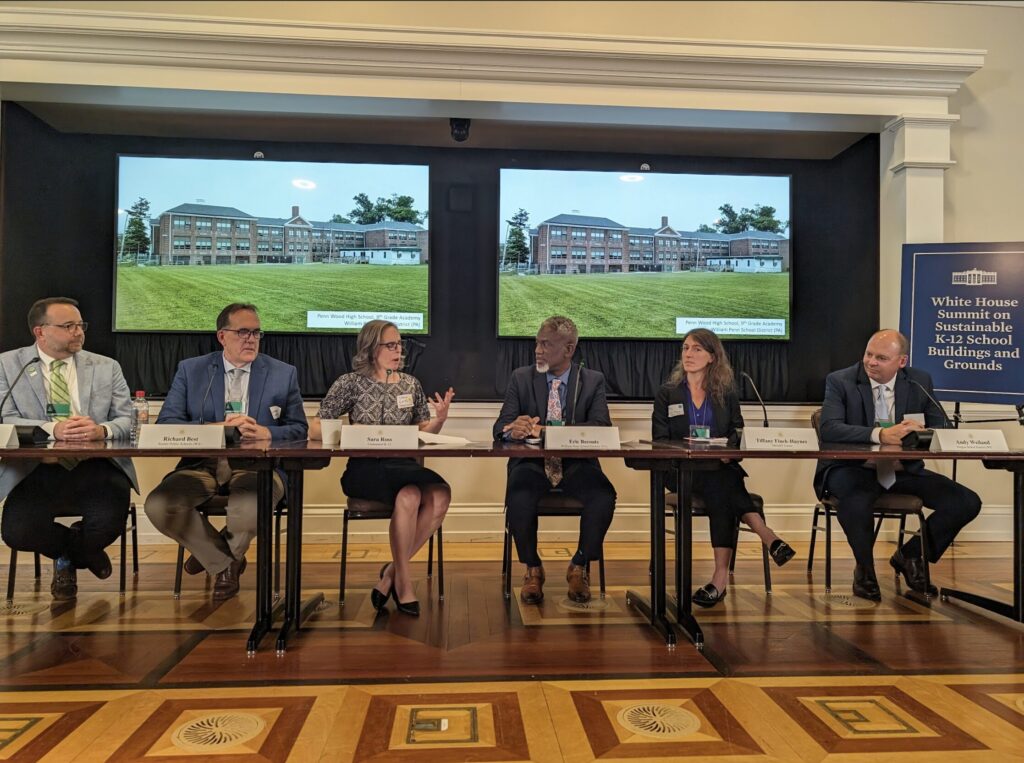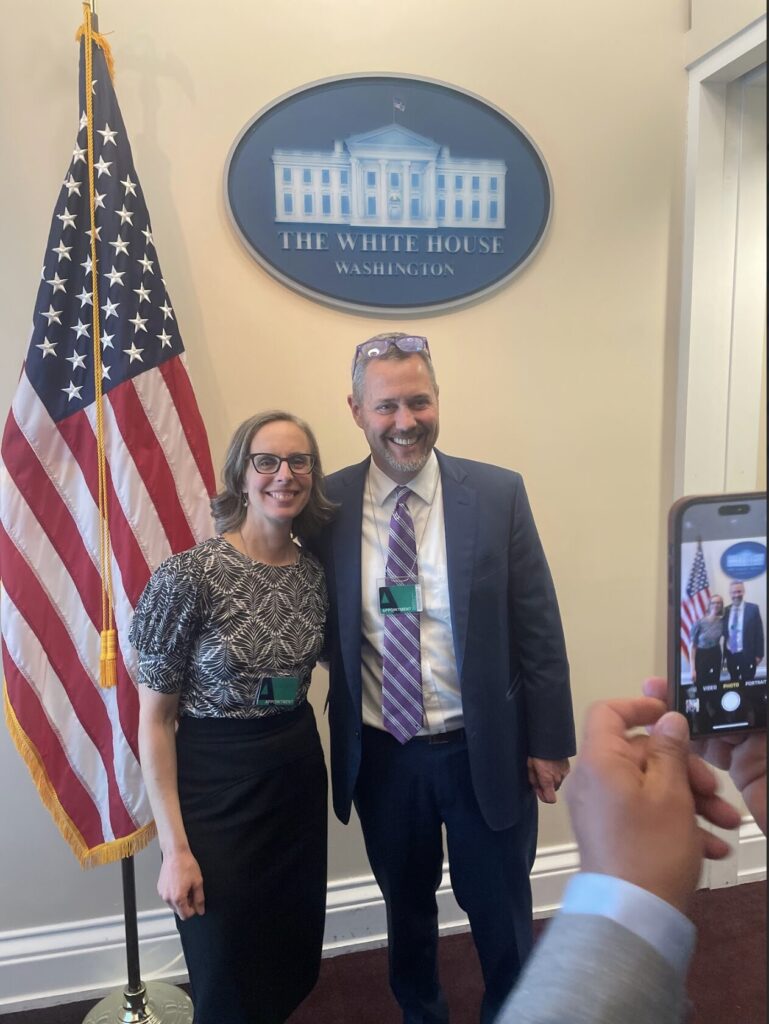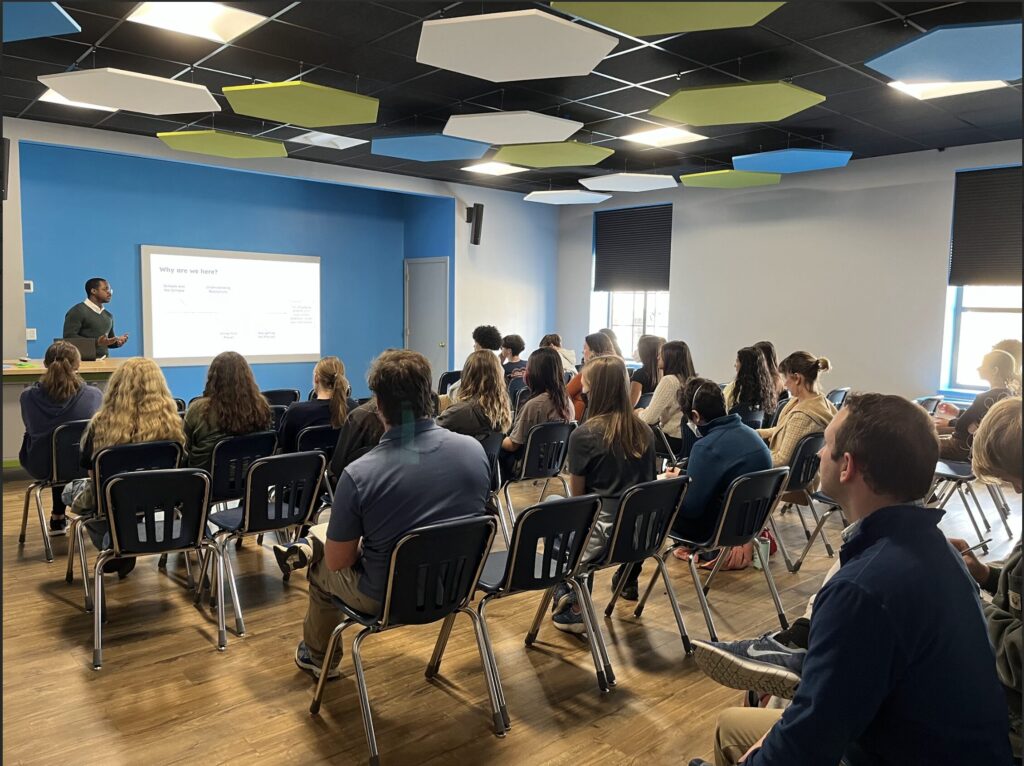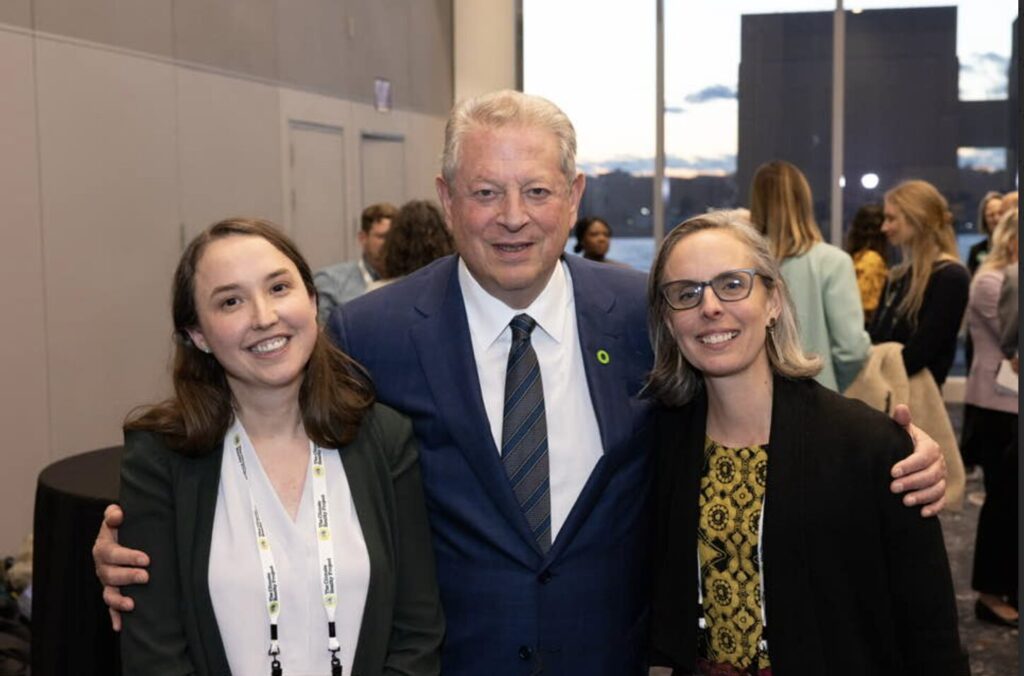Saving Money on Clean Energy for Schools

Sara Ross leading White House Panel on elective pay. Photo: Undaunted12
The following article appeared previously in the Amherst Current. It is reposted here with permission of the author.
Amherst resident Sara Ross has been alerting municipalities that they can save on clean-energy school construction costs by tapping into a federal program.
Right here in town, she was an early voice telling those planning the new net-zero elementary school building how Amherst could save about $4 million through the Inflation Reduction Act (IRA), said Town Councilor Cathy Schoen, who chairs the building committee.

“We’re a living example,” said Schoen. “She’s pulled me into talking to other Massachusetts towns. It’s been a good project to alert people about this, because you don’t normally think the federal government will be there for you.”
And the reach of the nonprofit that Ross co-founded, UndauntedK12, extends way beyond Massachusetts. In April, she moderated a panel discussion at the White House before 90 school officials on the clean-energy incentives in the IRA.
“The Inflation Reduction Act sets us up for a decade of transformation in our schools,” she said in introducing the White House panel. “The new federal resources can help us build new, efficient schools powered by solar energy. And they can help us breathe new life into our existing school buildings by replacing inefficient fossil-fuel-burning systems with the new highly efficient clean-energy systems of today.”
Ross has consulted with school districts all over the country. Last month, she addressed a meeting about the IRA incentives at the U.S. Treasury Department.
She also testified before a Massachusetts legislative committee on a bill sponsored by Rep. Mindy Domb and Sen. Jo Comerford. The bill would chart a course for Massachusetts schools to meet a set of health, energy and climate standards, and a plan is expected by the end of the year.

“Sara reached out early to support Sen. Comerford and I in our work to mobilize state resources to address the climate crisis and our deteriorating public school building infrastructure by supporting healthy and green schools in the commonwealth,” Domb says. “She is a tireless advocate for creating and promoting clean and green schools, and generously shares her expertise, engagement and collaborations with other advocates and legislators. She’s had a real impact and helped to move this issue forward.”
Ross is undaunted by the recent election and the votes against the IRA by Republicans, even as its benefits provide jobs and clean energy for their districts.
“Congress is unlikely to repeal the Inflation Reduction Act,” she said. “For one thing, the vast majority of the nearly $350 billion it has sent out has gone to Republican districts, according to an analysis by the Massachusetts Institute of Technology and the Rhodium Group, leading 18 House Republicans to write a letter defending the law’s energy tax credits.”
It’s widely known that the IRA provides tax credits that lower the net cost of clean energy for homes and businesses. But many school officials don’t know that the IRA can also help pay some of their own construction costs.
When school officials tell her they can’t access these benefits because they don’t pay taxes, she says, “Well, turns out we have this great new thing called direct pay or elective pay, same thing, and that magically turns this tax credit into a cash reimbursement for you.”
Most school districts can get reimbursed for at least 30 percent of the cost of solar panels and ground source heat pumps (both planned for the new elementary school building) as well as electric vehicles, charging equipment, and energy storage. Unlike grants, this money is non-competitive and available until 2033, which enables the long-term planning that’s necessary in school construction.
In addition to saving money on electricity and addressing the climate crisis, solar panels and heat pumps can provide air conditioning and air filters that make classrooms healthier for students.
Nationwide, there are 8 to 9 billion square feet of school buildings, and we spend $110 billion a year on school infrastructure, Ross says. The vast majority of schools burn fossil fuels and don’t have solar panels, and there are 500,000 mostly diesel school buses. In Massachusetts, there are 1,840 school buildings with 186 million square feet, burning 880,000 metric tons of carbon a year, she says.
“There’s no path to zero energy without including schools,” she says. Massachusetts officials have pledged to get to net-zero by 2050.
“We believe that Massachusetts can be on the vanguard, setting the example for how other states can support schools in playing their transformational role in the climate emergency,” according to UndauntedK12’s website.
In Amherst, we expect to get the federal reimbursements after the new elementary school building is operational, projected in 2026. The town put up $5 million in reserves to lower the tax impact of the $98 million project, and the intention is to use the reimbursement to put that amount back in reserves, Schoen says.
Ross operates at the intersection of education and climate action. She has partnered with the Massachusetts School Building Authority to host a roundtable presentation on how to reduce clean-energy construction costs through the IRA.

“I have the best job,” she says. “I’m spreading the word about getting money to do things people want to do anyway and seeing a way to pay for it.”
Ross is a 1993 graduate of Amherst Regional High School, where her name was Sara Piccicuto and she was a standout cross-country runner. She and her husband bought an old house on Cottage Street and retrofitted it, installing 45 solar panels and moving in in 2010. The family has three electric vehicles.
Ross was previously the founder and CEO of Sungage Financial, an organization devoted to making solar more affordable by working with banks and capital sources. The goal was to make financing solar panels like getting car loans, she says.
“We are so excited about the role schools can play in climate change,” Ross says. “They are the second largest form of public infrastructure after roads and bridges. And they are preparing the next generation with the skills that humans need to thrive. We’re preparing young people not just for the jobs of the future but life in a rapidly changing climate.”
Read More About the Work of UndauntedK12
Hey Schools, Get Your IRA Tax Credits (podcast on Volts)
Helping America’s Schools Rise to the Challenge of Climate Change (by UndauntedK12 cofounder Joanthan Klein, Emmerson Collective)
MSBA Roundtable on Clean Energy Tax Credits for Schools (MSBA / YouTube)

Amherst has a consultant’s report listing all the schools and town buildings that could effectively install solar panels over parking lots and rooftops. So it would be great to take this findings and apply for federal money and save money — all at the same time.
The last few years have taught us that cities and towns have to lead. Let’s take advantage of any grants available.